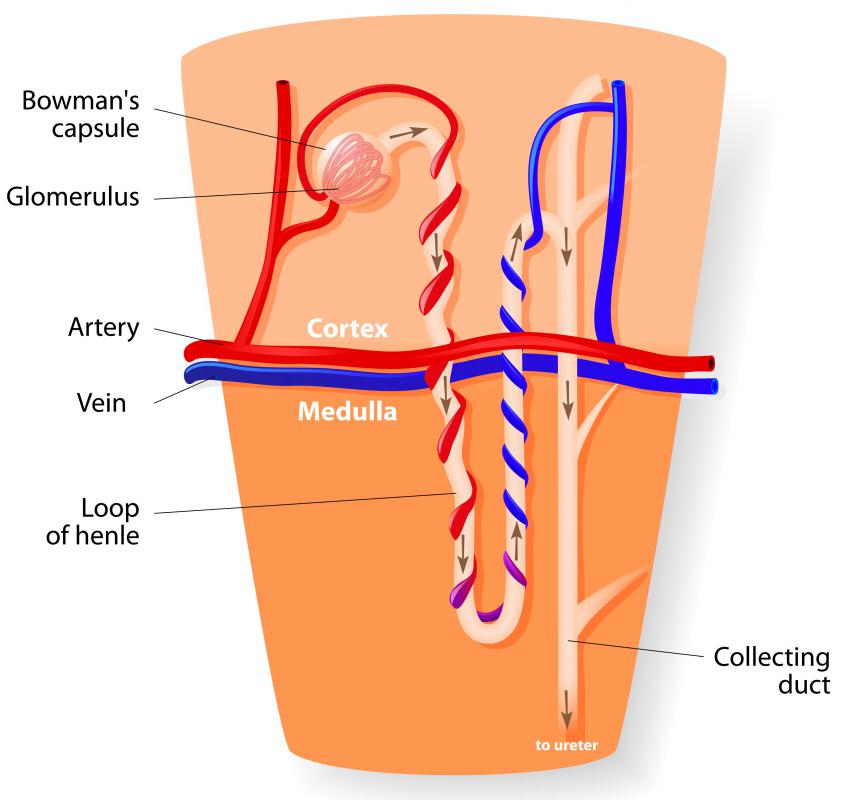At WiseGEEK, we're committed to delivering accurate, trustworthy information. Our expert-authored content is rigorously fact-checked and sourced from credible authorities. Discover how we uphold the highest standards in providing you with reliable knowledge.
What is the Renal Corpuscle?
The renal corpuscle is the basic filtration structure of the kidney. Mammalian kidneys are a set of two, bean-shaped organs which normally lie on each side of the spine at the small of the back. Urine is produced in two well-defined regions of the kidneys, the renal cortex and the renal medulla. Within these structures lie the renal corpuscles and excretory tubules, together known as nephrons. By regulating blood concentration of water and salts, the renal corpuscle maintains blood chemistry at desirable levels.
While generally treated as a single unit, the renal corpuscle is actually the meeting point of two separate structures, the glomerulus and the Bowman's capsule. The glomerulus, essentially a little ball of capillaries, sits inside the Bowman's capsule like a baseball in a catcher's mitt. Its partner, the Bowman's capsule, is a cup-shaped structure arising from the dead end of the nephron's excretory tubule.

The blood vessels within the glomerulus are non-selectively permeable. This means that any blood solutes below a certain size are able to cross the membrane of the capillary walls. Permeability enables the glomerulus to act as a filter for the blood. As pressure from the heart pumps blood into the glomerulus, solutes such as salts, glucose, and urea — as well as water — are pressed through the tiny openings of the membrane. Larger particles, such as proteins and blood cells, are unable to penetrate, and so remain suspended in the blood.

Specialized cells inhabiting the renal corpuscle further filter the water and solutes. These cells, known as podocytes, trap any large solutes missed by the capillary membrane. The Bowman's capsule then catches the filtrate and passes it out of the renal corpuscle. Glomerular filtrate travels through a series of tubules and finally into a general collecting duct, which receives contributions from a number of nephrons.

The Bowman's capsule and the collecting duct are lined with a specialized tissue known as transport epithelium. It is this tissue that processes the filtrate into urine. Once processed, the urine is funneled by the collecting duct into the ureter, and then to the urinary bladder.
From the roughly 290-530 gallons (1100-2000 L) of blood which pass through the human body daily, the renal corpuscles produce just under 50 gallons (180 L) of filtrate. Once processed by the tubules and collecting ducts, this amount of filtrate produces, on average, just under half a gallon of urine. The remainder of the filtrate is reabsorbed into the blood. This process is regulated by the endocrine system, and serves to keep the blood both chemically-balanced and free of waste products.
AS FEATURED ON:
AS FEATURED ON:













Discuss this Article
Post your comments